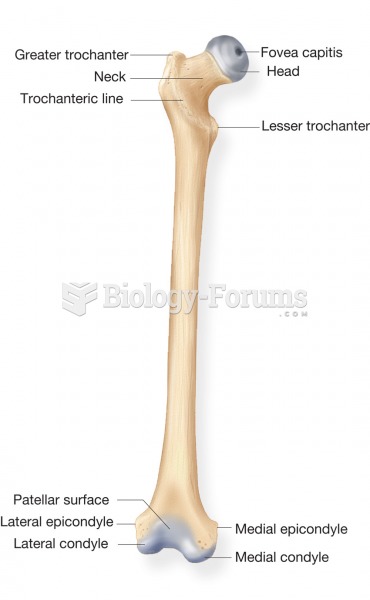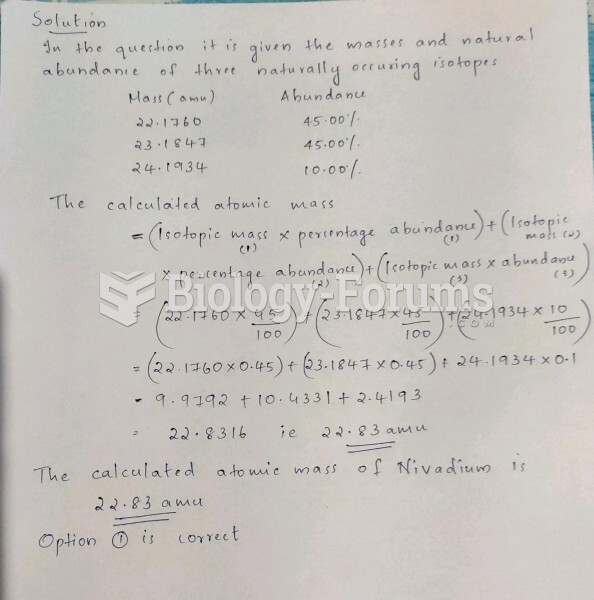|
|
|
In 2012, nearly 24 milliion Americans, aged 12 and older, had abused an illicit drug, according to the National Institute on Drug Abuse (NIDA).
Amoebae are the simplest type of protozoans, and are characterized by a feeding and dividing trophozoite stage that moves by temporary extensions called pseudopodia or false feet.
According to the National Institute of Environmental Health Sciences, lung disease is the third leading killer in the United States, responsible for one in seven deaths. It is the leading cause of death among infants under the age of one year.
The types of cancer that alpha interferons are used to treat include hairy cell leukemia, melanoma, follicular non-Hodgkin's lymphoma, and AIDS-related Kaposi's sarcoma.
Thyroid conditions may make getting pregnant impossible.
 The tiger, Panthera tigris, was historically found throughout much of Asia, but at low population de
The tiger, Panthera tigris, was historically found throughout much of Asia, but at low population de
 A recent study found that female baboons that groom each other are more likely to come to each other
A recent study found that female baboons that groom each other are more likely to come to each other





